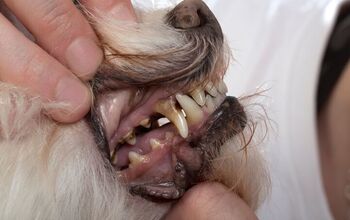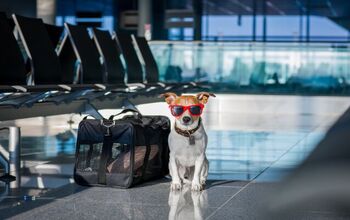Winter Workout: The Frost-Savvy Snowshoe Dog

Snowshoeing is fantastic exercise, not to mention an avalanche of fun and fairly inexpensive to take up. You can pick up a pair in most sporting goods stores, and even department stores (I got mine at Costco), or rent them for the day. And there’s no reason why your dog can’t join you in this winter sport. But before you head out on your on your frosty excursion, Kevin Roberts, snowshoer extraordinaire, offers these important tips to ensure your dog can keep up, keep comfortable and keep energized at you trek across the wintery tundra trails.
ID Please. There is no worse feeling than losing a pet. A collar with an ID tag is insurance – if you and your dog get separated, the people who find him will be able to call you and facilitate a quick reunion. Be sure the tag has your cell phone number on it. When you’re out in the cold, keep your cellphone in an interior pocket. Your body heat will keep the battery warmer and it will be more likely to work in case of an emergency.
Related: Wellness CORE Superfood Protein Bars
- Drink up. Keeping your dog properly hydrated is a big deal. Dogs who eat snow are telling you they are thirsty. It can be hard to tell if a dog is thirsty, and they often don’t drink enough water to keep themselves fully hydrated for a strenuous activity such as snowshoeing. If you want to check your dog’s hydration level, then just take a look at his pee! Remember this: White and clear, no need to worry, dear; Yellow and stinky, drinky, drinky, drinky! I always carry water with me, added with a bit of melted beef fat – this mixture is irresistible to my dogs. They love it, so they drink more, and I can be sure each dog has gotten enough water.
Related: Kurgo Collaps A Bowl
- Wax On. For off-trail, deep-snow shoeshoeing adventures, you’ll want to wax up your dog’s paw pads. There are numerous brands of paw wax, formulated to protect your dog from ice balls accumulating in between their toes. They also protect the paw pad itself by forming a waxy shield against the cold.
Related: Muttluks Pawstik and Pawmagik Paw Balms
- Hands Free. To make it a total body workout, I prefer to use a set of poles when I snowshoe. This gives my arms a much-needed constitutional, and it helps with my balance on the hills. Now, I can’t very well walk my dogs on leash and carry poles at the same time. I’ve tried, but it’s really not that fun. I prefer to attach the dogs’ lines to my waist using a trekking belt. With the dogs secured to my waist, I am still able to maintain leash control, while keeping my hands free. If you opt for the hands-free method, use a longer line to keep your dog out from underfoot. I prefer using a line meant for skijoring, as it features an internal bungee built-in. The bungee helps take some of the stress out of sudden movements.
- Harness up. When snowshoeing, a harness is the best way to keep your dog safe and comfortable. When moving about in the deep snow, a leash attached to the collar is more likely to become tangled up in your dog’s legs. This can be dangerous, as well as being definitely annoying (having to untangle your dog every two minutes cuts down on the fun). You’ll have an easier time keeping your dog tangle-free with a harness that features a back attachment. A no-pull harness with the attachment point on the front is not appropriate for snowshoeing – you want your dog to have full range of movement with his front legs to get out of deep snow. Added bonus: a harness is a handy safety option in case your dog falls through thin ice or into deep powder.

Kevin Roberts lives for adventure. Together with his pack of rescue dogs and his husband, he spends as much time outdoors as possible. Kevin lives by the motto: "Get outside and play with your dogs!
More by Kevin Roberts
























